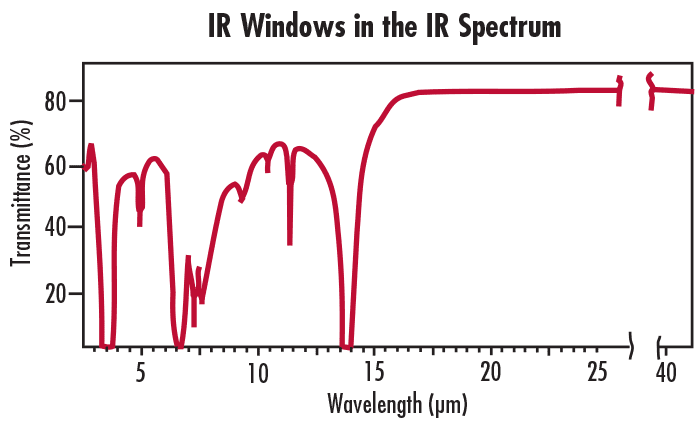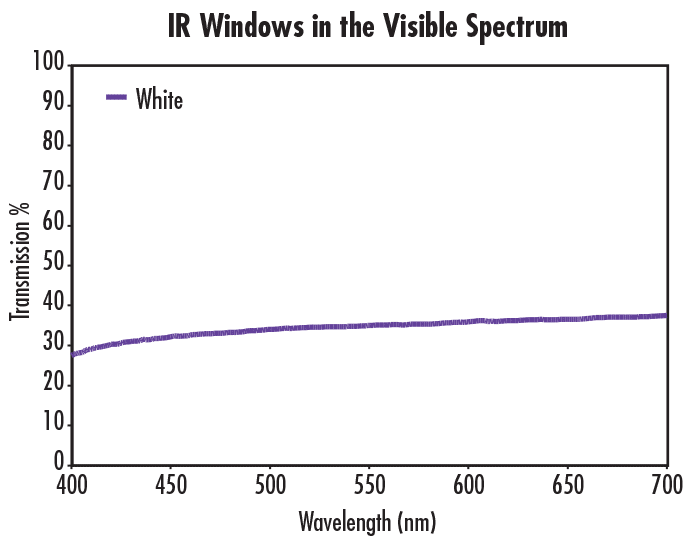
IR Fresnel lenses are molded in a flexible, 0.015" (0.457mm) thick, milky white plastic. Advantages of this product are: least absorption loss in the 8-14μm region, extremely thin with consistent thickness across the lens, large apertures and minimal thermal expansion. The design of an infrared-transmitting Fresnel lens involves many complex considerations. The grooved side of a Fresnel lens should face the longer conjugate (away from the detector when used to collect radiation). If the smooth side needs to face the longer conjugate for some nonoptical reason, the maximum aperture of the lens should be f/1.0. In this case, total internal reflection keeps all radiation from the area of the lens past f/1.0 from reaching the image. Even when the grooves face the longer conjugate, the portion of the lens past f/1.0 contributes a diminished amount and there is no significant contribution past f/0.5.


| Durability Specifications | |
| Effect of Sunlight | None to Slight |
| Effect of Ultraviolet | UV Stabilized |
| Effect of Weak Acids | Very Little |
| Effect of Strong Acids | Attacked by Oxidizing Acids |
| Effect of Weak Alkalies | Very Little |
| Effect of Strong Alkalies | Very Little |
| Effect of Organic Solvents | Little below 60°C (140°F) |
1-800-363-1992
or view regional numbers
QUOTE TOOL
enter stock numbers to begin
Copyright 2025 | Edmund Optics, Ltd Unit 1, Opus Avenue, Nether Poppleton, York, YO26 6BL, UK
California Consumer Privacy Acts (CCPA): Do Not Sell or Share My Personal Information
California Transparency in Supply Chains Act